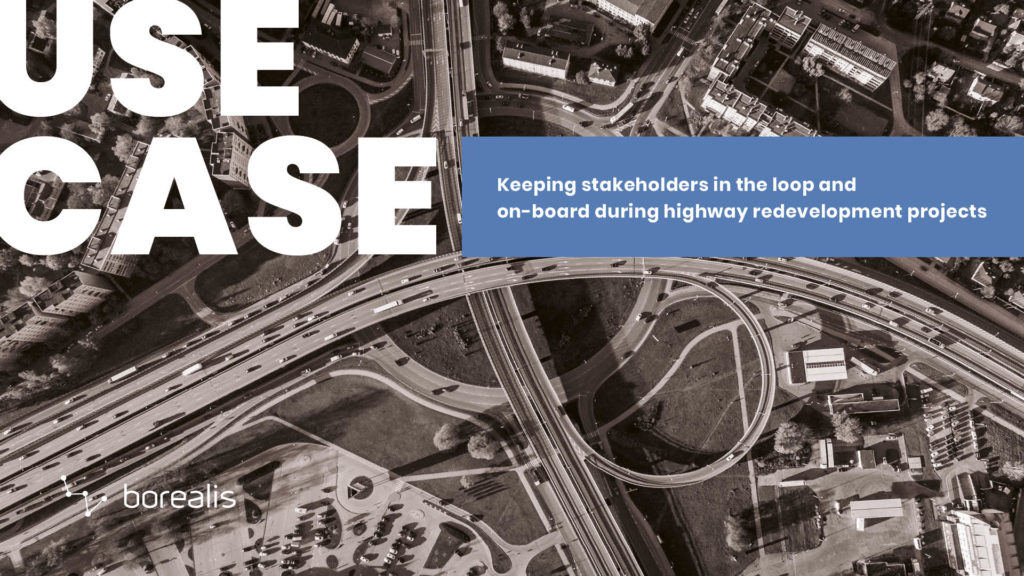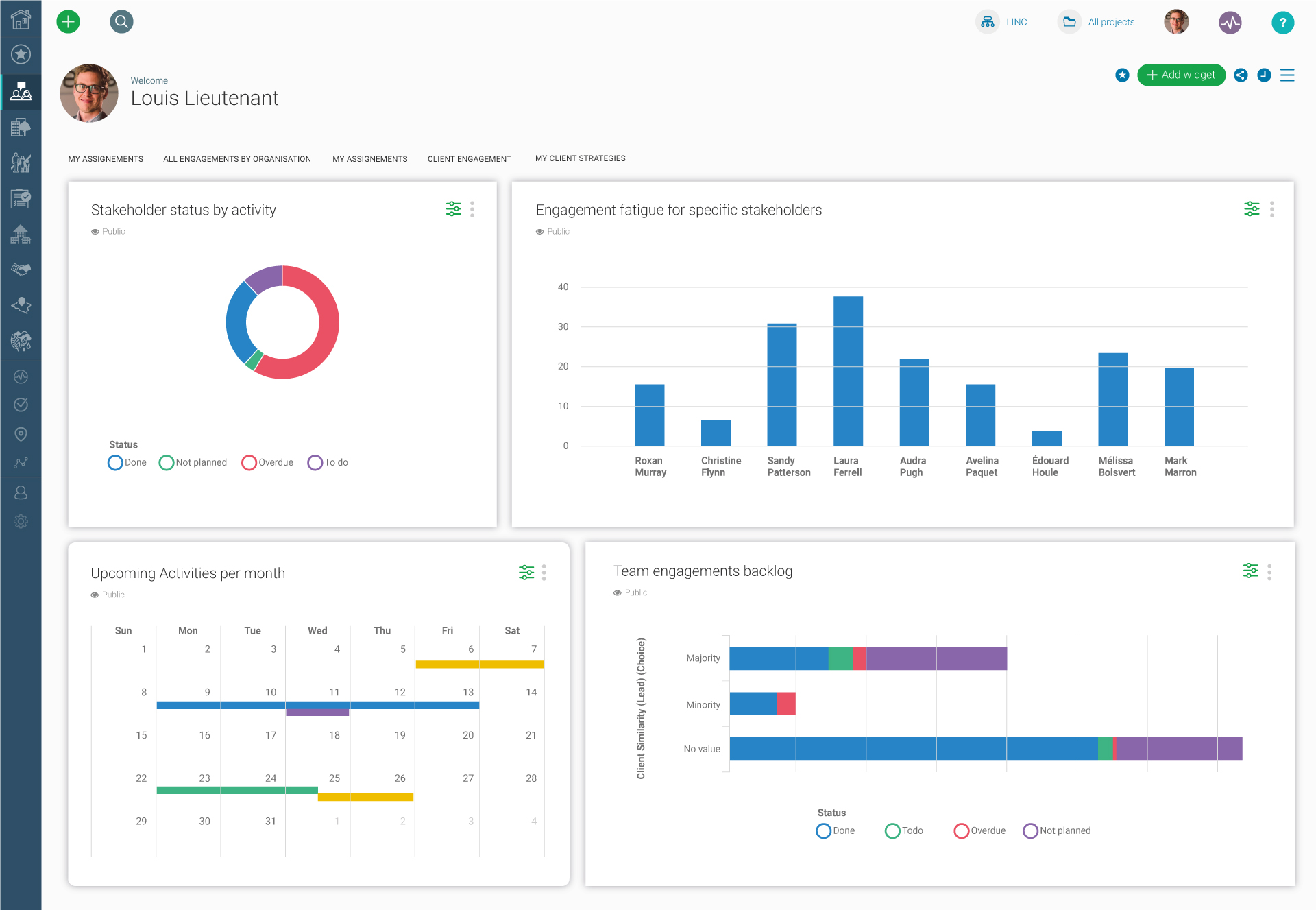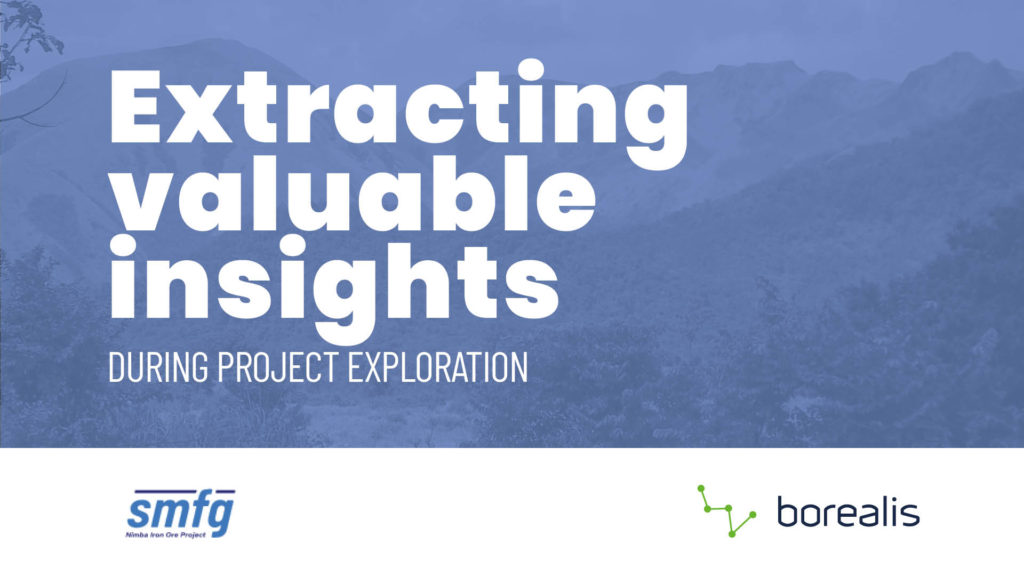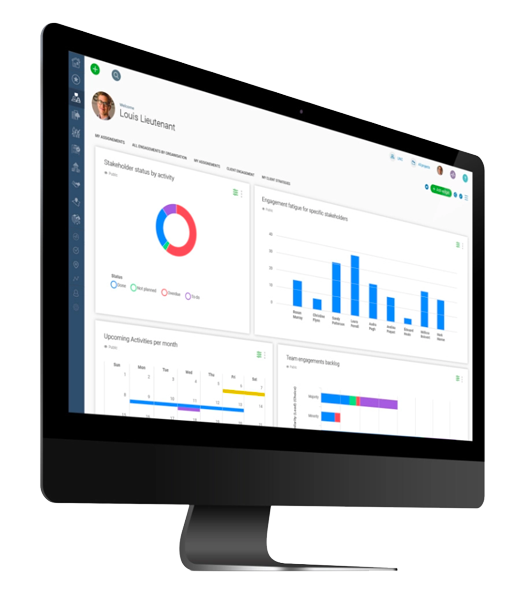What is Community Engagement & Why is it Important?
Community engagement is building relationships with community stakeholders to achieve sustainable dialogue and discourse so that all parties feel respected, empowered, and informed. You are not only responsible for managing your organization, but you must build relationships with those outside of it. Reaching these community groups can be challenging. It is also essential. Ignoring them is not an option.
The evolving needs of the community, coupled with your need for their acceptance, make community engagement activities important. No matter your industry, you face an ever-evolving set of challenges when working in a new community. Some of these issues are within your control. However, most are out of your control. That’s because external stakeholders have a significant impact on the outcomes of your projects.
We’ve spent 20 years helping organizations build enduring and trusted community engagement strategies. During this time, we’ve seen the world become increasingly connected and relationships increasingly complex. There are ways to identify and engage with community groups that will lead to success for all parties involved.
Here is a deep dive into community engagement: what it is, why it’s essential, and how to create sustainable, repeatable strategies that will help your organization develop more meaningful connections with external stakeholders of your projects
Topics covered in this article:
- What is Community Engagement?
- What are Community Engagement Principles?
- Why is Community Engagement Important?
- How to Improve Community Engagement?
- What Are Some Community Engagement Best Practices?
- What Are Examples of Community Engagement?
- How Can Community Engagement Software Benefit My Organization?
- Tools Built to Simplify Your Community Engagement Activities
What is Community Engagement?
When you review the literature on the subject, finding a community engagement definition is challenging. However, at its core, there are some common elements.
Community engagement is about ensuring that communities have their voice heard. It is your strategic interactions with stakeholder groups impacted by your project—mutual decision-making to solve complex problems.
The term community has far-reaching implications. There are communities built on shared geography, interests or affiliations. For example, the communities you’re dealing with could be all the inhabitants of a town, an environmental group or a local union.
Just as communities are diverse, engagement can take on many forms, whether through education, consultations, participation, or communication. What links all those community engagement activities are interactions with stakeholders in the ways they need — meeting them where they are.
By building a community engagement definition, we are creating an organizational philosophy. A community engagement model shifts corporate thinking from the individual to defined groups. Inclusion and diversity are vital considerations that drive your community engagement framework.
What are Community Engagement Principles?
Several principles guide community engagement. The goal is mutually beneficial, sustainable relationship-building. You’re creating a collaborative spirit that serves the interest of everyone involved, both internally and externally. It’s why the fundamental principle of community engagement is collaboration.




Why is Community Engagement Important?
When you do not engage with the community, everyone loses. Community members, feeling powerless, rally against you. Your organization must deal with many more grievances than if you took a proactive approach.
A forward-thinking community engagement model establishes trust with communities from the outset. Your processes and community engagement strategy should consider what benefits all parties involved.
When you follow the above community engagement principles, you move stakeholders through a process that seeks to inform, consult, involve, and empower them. You let them know what is happening and get their feedback early, establishing a relationship of trust from the outset.
Building trusted relationship benefits you and the communities where your projects exist. Your organization benefits from an engaged and empowered community because they are more likely to advocate for your project and increase the likelihood of reaching your project goals. Community stakeholders feel heard, and it helps meet their needs.
Finally, effective community engagement is important for organization who need to comply with requirements regarding projects permits and funding. In fact, for the past few years we have seen a surge in obligations to report on relations with impacted, indigenous, and environmental justice communities, as well as to establish clear guidelines for community benefits agreements.
How to Improve Community Engagement?
Invest in the right set of skills
Community relation specialists need specific skills in stakeholder engagement to help bolster their community engagement strategy and subsequent interactions. In our experience, we have found these common elements of a sustainable community engagement strategy.
- Compassion and empathy: At its most fundamental level, a community engagement strategy considers other people’s needs and concerns and finds a solution that works for everyone. Although face-to-face discussions make way for online exchanges, these skills remain the backbone of good stakeholder and community engagement strategies.
- Ability to prioritize: Not all stakeholders have the same interest or influence over a project’s successful delivery. Prioritizing stakeholders is necessary so that you can direct efforts where they matter most.
- Willingness to improve: Change is always uncomfortable, even when you know you’ll be better for it. Organizations that embrace change report significant gains. While technology cannot replace things like compassion and empathy, it’s a powerful enabler because it allows you to do much more in less time.
Measure and Analyze Community Engagement Results
We’ve outlined the importance of meeting community members where they are and championing their needs. It’s essential. But you must also remember how your community engagement strategy links to your business objectives. You must implement measures to manage impacts, maximize opportunities, and effectively manage risks.
It is easy to tell community relations practitioners to go out and build relationships. But often, the challenges are more internal, like getting the internal buy-in, the commitment, the support, the resources, and alignment within the company.
Learn more!
What Are Some Community Engagement Best Practices?
Start early
Establish a grievance management process
Grievance management is more than effectively engaging stakeholders to resolve issues promptly. Next-generation stakeholder and community engagement teams support real-time decision-making by relaying the right information to the right people within the organization. This communication requires a solid framework to standardize stakeholder engagement processes. It’s an essential part of your community engagement model.
Create a community engagement strategy
A community engagement strategy is a step-by-step process outlining how your organization will communicate with your community stakeholders to increase the likelihood of positive project outcomes. It is a written document that identifies key stakeholders and outlines your approach to interacting and communicating with them. It allows your project manager to devise a community engagement method to manage expectations and deliver the right information to the right people at the right time. Here are the twelve essential elements to build your community engagement strategy.
Using multiple methods of engagement is also essential. This may include public meetings, surveys, social media, or other channels that allow community members to participate in the process in different ways. Using multiple methods can help ensure that all community members have an opportunity to participate, regardless of their schedule, location, or other factors.
Building relationships with community members, organizations, and groups is critical to effective community engagement. Building relationships requires time, effort, and ongoing commitment and involves listening to and valuing the perspectives and input of community members. Building relationships can help foster trust and understanding and lead to more effective and sustainable outcomes.
Providing clear and concise information about the project or initiative is also essential. This may include providing information about the goals, timeline, potential impacts, and other vital process aspects. Providing information can help ensure that community members are well-informed and can make informed decisions about their participation in the process.
Providing feedback to community members is another critical best practice. Giving feedback can help community members understand how their input impacts decision-making and can help build trust and buy-in for future engagement efforts. Evaluating the effectiveness of the engagement process is critical to the continuous improvement of your feedback to the communities you interact with.
What Are Examples of Community Engagement?
There are several ways to engage with local communities. Formal engagement and meetings, public consultation, informal engagements, and negotiations are all examples of community engagement activities.
National, regional, and local governments hold formal engagement meetings regularly to exchange project updates and discuss permitting and regulatory compliance issues. Another community engagement activity is formal discussions with specific interest groups, such as community leaders, farmers, or local trade groups.
A common example of a community example, which is now part of most of the project approval process, is public hearings. A public hearing brings stakeholders together. They allow stakeholders to share their thoughts and for your organization to provide necessary information to a broad audience. Generally, there is a wide audience, and the meeting is transparent and open.
Informal meetings also occur regularly during project activities. These could be a greeting in the street, a visit to their farm, or a response to an email request.
Website and digital portals where people can log questions and comments are another way to engage with communities.

Transportation Use Case
How Can Community Engagement Software Benefit My Organization?
Community relations and engagement are so complex that the old ways of doing business will not work effectively. Spreadsheets and notes scribbled on paper aren’t going to scale to meet your organizational needs.
It is essential to leverage the power of a community engagement software built for your exact needs and refined over decades to provide the features and modules you need for a proactive community engagement model. Here are some of the benefits organizations across the globe experience with our community engagement software.
Use technology to your full advantage.
Having a centralized tool for managing stakeholder engagement means team members can access, analyze, and report on data from a single location. This allows global teams to always be on the same page. Having stakeholder information, industry requirements, engagement efforts, community commitments and regulatory compliance in one place creates a powerful institutional memory supporting a continuous improvement culture.
Analyze stakeholders and communities more efficiently.
Engage meaningfully on multiple platforms.
There are advantages and drawbacks to using social media for stakeholder engagement. On the one hand, you can quickly obtain lots of information, and stakeholders can easily express their concerns, wants, and needs. Conversely, it’s harder to control the message when flooded with posts from unrelated individuals sharing irrelevant or incorrect information. Meaningfully engaging with project-affected people can be tricky online. It is possible if you’re fully aware of the limitations of online engagement.
Track formal and informal meetings.
Tools Built to Simplify Your Community Engagement Activities
As social acceptance becomes increasingly important across all industries and regions, organizations are awakening to the fact that a stakeholder and community engagement strategy is now a vital business function they must optimize. This is what next-gen stakeholder and community engagement leaders have realized. And since we have been working with community relations specialists and leaders for the past 20 years in projects ranging from the extractive sector to renewable energy sector, our community engagement software has evolved to be the most advanced stakeholder engagement software globally. Based on our clients’ feedback, we continuously improve our platform by developing purpose-built modules and features ready to be configured to your needs and that answers community engagement best practices.





